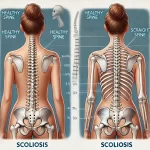
Coronary Heart Disease (CHD), also known as Ischaemic Heart Disease, is a condition that arises when the blood flow to the heart is interrupted or reduced. It is a widespread and potentially life-threatening health concern that often goes unnoticed until symptoms manifest. Recognizing the signs and understanding the risk factors are crucial steps toward managing and preventing the impact of CHD.
CHD can present with a variety of symptoms, and being aware of these signs is essential for timely intervention. Common indicators include:
CHD is often rooted in atherosclerosis, where a fatty substance called atheroma accumulates within the coronary arteries. This buildup narrows the arteries, impeding blood flow. If a piece of atheroma breaks off, it can cause a blockage, leading to a heart attack.
Diagnosing CHD involves various tests to assess the condition of the heart and blood vessels. These may include:
Understanding and managing risk factors is vital for preventing CHD. These factors fall into two categories:
Certain health conditions elevate the risk of CHD, including hypertension, high cholesterol, type 2 diabetes, polycystic ovary syndrome (PCOS), and inflammatory diseases like rheumatoid arthritis.
Controlling controllable risk factors is pivotal in mitigating the risk of heart disease. Lifestyle changes include:
We host reputable resources for patients looking for doctors, hospitals, and specialty therapies in India. For you, we’ll identify the best medical options. Our team will provide you with a list of licensed, recognized, and trusted physicians and medical facilities in relation to your medical needs. Additionally, we provide a cost-effective treatment plan. Aside from that, we help patients with a wide range of other things, like getting travel permissions and medical visas.
Indian Health Adviser (IHA) is a healthcare facilitator seeking to make health and wellness easier for people of international residents, their families, and their friends.
Designed by Acmeinfolabs